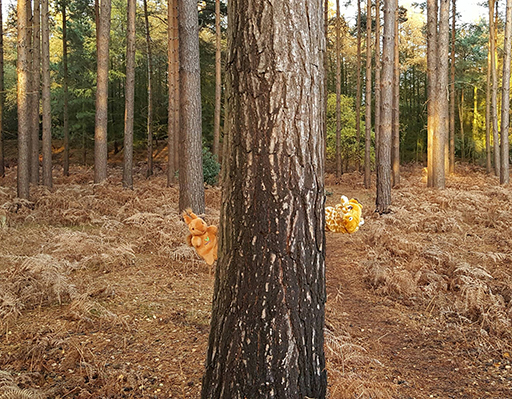2.1 Not all planets transit!
Kepler discovered planets by looking for transits. Of course, not all planets transit their parent stars from our point of view. Planetary systems are not all perfectly lined up. We know this because several planets we’ve discovered using the radial velocity method, like 51 Pegasi b, don’t transit their stars from our viewpoint. It would also be very peculiar indeed if the orbits of all the stars in the Galaxy were lined up especially for us. Instead, it makes sense to assume that the orientation of the orbits of planetary systems are random. For each individual star and planetary system, the orientation will depend on the swirling motions of the gas cloud from which it formed, and these swirling motions are random.
The likelihood of a planet transiting relies on several factors. A key factor was introduced last week: the closer a planet is to its star, the more likely it is to be seen to transit. Basically, that just means that the system can be tilted at a greater angle before the planet no longer transits the star. Last week, this was compared to a child playing hide and seek behind a tree. It is much easier to hide if you stand close in, behind the tree, just as it is much more likely that a planet will be lined up so that it appears in front of its star if it is close to the star. Figure 2 is a photograph of a tree with two hidden children standing right behind it, with each child holding a puppet. If they had stood further back, behind the tree, it would have taken some skill to line everything up perfectly so only the puppets were visible.
Also, the larger the star is, the more likely it is for the planet to be seen to transit. This makes sense because if the star is bigger then there’s more of a disc available for the planet to cross. In the hide-and-seek example, it’s easier to hide behind a bigger tree!
Activity 1 Which planet is more likely to transit?
- Two stars, one the size of the Sun (A), and one 20 per cent larger than the Sun (B), each have a planet in orbit around them. Which planet is more likely to transit?
Answer
The planet orbiting around Star B is more likely to transit.
- Two identical stars each host a planet. One planet takes two days to orbit its star (A), and the other takes four days to orbit its star (B). Which planet is more likely to transit?
Answer
The planet around Star A is more likely to transit as it is closer in.
- Two stars, a G-type star and an M-type star, each host a planet in a five-day orbit. For which star are we most likely to see a transit? (Hint: you learned about star types and their relative sizes back in Section 2.3 of Week 4.)
Answer
The planet orbiting the G-type star is more likely to transit because the G-type star is bigger.

